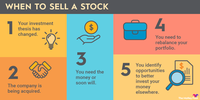Options contracts are financial instruments that savvy investors can use to adjust the volatility and risk profile of their portfolio. Used prudently, they can help you meet your investment objectives whether you're looking to maximize the value of your portfolio (at the risk of greater losses), conserve its value, or generate additional income.
But if you don't know what you're doing while trading options, you may end up losing a lot of money.
Options

Understanding how options work
Understanding how options work
An option is a contract between two parties that gives the contract holder the right, but not the obligation, to buy or sell shares of a stock at a specified price on or before a specified date.
The option's specified price is called the strike price. The date on the option is its expiration date. The price you pay for the contract is called the premium.
Options derive most of their value from the stock they're associated with. The stock price relative to the option strike price is the main determinant of their value. As such, they belong to a class of financial instruments called derivatives.
There are two types of options contracts. Calls give the contract holder the right to buy shares at the strike price. Puts give the contract holder the right to sell shares at the strike price. Each contract is for 100 shares.
Calls and puts with various strike prices and expirations trade every day the stock market is open. You can trade options with strike prices close to the current stock price or very far off from the strike price. You can trade contracts for next week, next month, next year, or more than two years away.
How to read options tables
How to read options tables
When you go to trade options, you'll find a table of contracts for any given expiration date. Here's a portion of the table for Apple (AAPL -1.22%) call options expiring in August 2023 when shares traded at around $177.
| Strike Price | Last Price | Bid | Ask |
|---|---|---|---|
| $65 | $120.33 | $111.25 | $112.90 |
| $80 | $115 | $96.65 | $98.65 |
| $100 | $95.37 | $76.35 | $78.70 |
| $105 | $73.27 | $71.35 | $72.95 |
| $110 | $69.67 | $66.85 | $68.30 |
| $115 | $63 | $60.50 | $63.05 |
| $120 | $59.35 | $56.20 | $58.20 |
| $125 | $63.05 | $52.80 | $53.25 |
| $130 | $47.10 | $46.50 | $48 |
Bid and Ask
The first column shows the various strike prices available for the specified expiration date in September. The second column shows you the last price the contract traded for.
Note that you won't necessarily be able to trade a contract at that price. Bid and ask prices are better indicators of the price for a trade you're trying to execute right now. The bid price is the highest amount anyone in the market is willing to spend to buy the contract. The ask price is the lowest amount anyone is willing to sell the contract for.
How to trade options
How to trade options
Here's a step-by-step guide to trading options.
1. Open an options account
Before you can start trading options, your broker has to approve you to do so. You'll fill out a questionnaire detailing your investing experience, how often you trade, your income, net worth, and at what level of complexity you'd like to trade.
Based on your answers, your broker may grant you the ability to trade options at any level up to your requested level. If you don't get approved for your requested level right away, you'll have to trade in the restricted account for a while and reapply.
Note that some retirement accounts have restrictions on what kind of options trades are possible. For example, you cannot use margin in an individual retirement account (IRA), so you cannot sell put options without enough cash in the account to cover the trade in case the contract holder exercises the option and forces you to buy shares.
Margin Call
2. Pick a type of option to trade
There are a lot of choices when it comes to options and a lot of ways to piece contracts and stocks together to make a trade. The simplest trade is buying a call or put option.
The first thing to do is analyze a company, upcoming events such as big announcements or earnings releases, and determine whether shares are overvalued or undervalued.
If you believe shares are undervalued, buy a call option expiring at some point in the future when you think the market will realize the true value of the shares. If you think they're overvalued, buy a put option. Earnings and big events can be catalysts for major stock price changes.
3. Determine your target strike price
If you're buying an options contract, you want it to be worth something as it approaches expiration. If the strike price on a call option is less than the stock price, it has intrinsic value. You could exercise the option, buy shares at the stock price, immediately sell them at the higher stock price, and make a profit. Likewise, put options have value if the strike price is higher than the actual share price of the stock.
In determining your target strike price for an option, you want to balance risk versus reward. You can maximize reward by buying contracts that currently have no intrinsic value (called "out of the money") with the expectation that they will gain value by the expiration date. You can minimize risk by buying options that already have intrinsic value (called "in the money"). Out-of-the-money options have lower premiums than in-the-money contracts.
Another risk lever is based on the expiration date. The more time until expiration, the more opportunities the stock has to move in the direction you expect. As a result, options contracts with expiration dates further out can be less risky than those expiring in just a few days, and, therefore, they carry higher premiums.
4. Make your trade
Select the options contract you'd like to trade. Pay the premium and any commission to your broker, and take ownership of the contract.
In practice, it's unlikely you'll exercise the options contract. If you made a profitable trade, you can sell the option for a gain before expiration. If the option expires worthless, there's nothing to be done.
Risks in options trading
Options trades typically have well-defined loss risks. For example, if you buy a call or put option, the most you can lose is the premium you paid for the option. That happens when the option expires worthless.
If you sell a put option, the most you can lose is the strike price of the contract multiplied by 100 for each contract you sold. That's offset by the premium you collect from originally selling the share. This only occurs if the stock goes to $0 per share before your contract expires. You'd be forced to buy worthless shares at your strike price.
However, if you sell a call option, you potentially face unlimited losses. The stock price can go up to infinity, and you'll be on the hook for selling shares well below their market value. It's the same risk as shorting a stock, but since options provide additional leverage, the potential losses are magnified.
There are ways to mitigate the risks in options trading. In fact, many options trading strategies are used to minimize risk by combining contracts or shares of the underlying stock. It can pay to educate yourself further about those strategies in order to fully understand the risks involved with trading options before you put real money on the line.



























































































































































































































